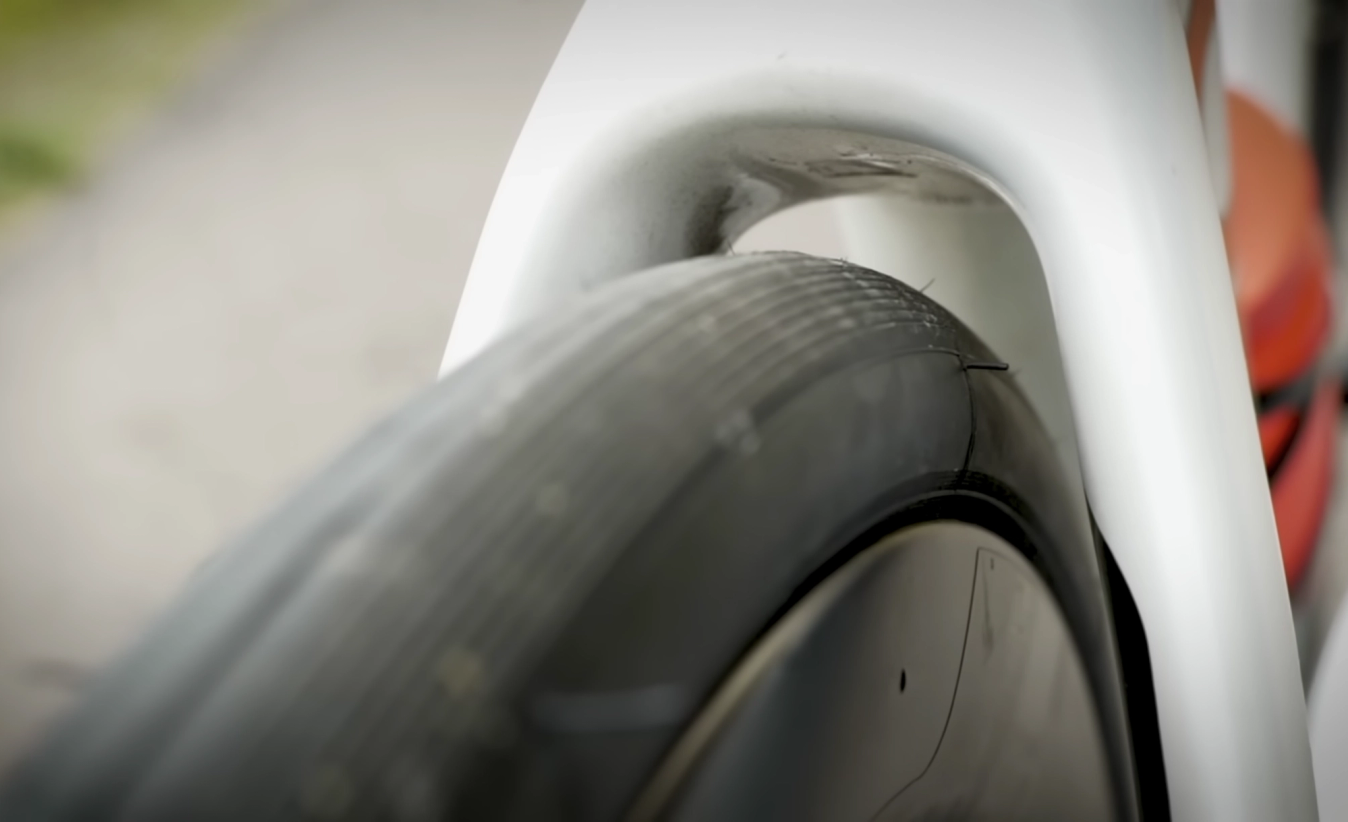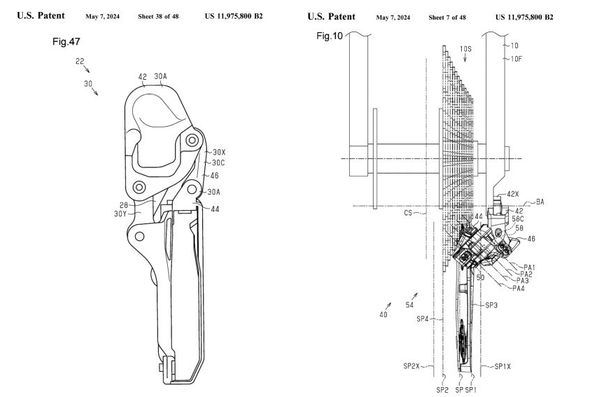Should you ride your road bike on gravel?
If you're thinking about heading off the beaten track on your road bike, here’s how far can you push it before things start to break
James Howell-Jones
Junior Writer
Road bikes are sturdier than many of us might think. In fact, with every season, modern road bikes seem to take more and more tech from the mountain bike world. These days, most road bikes have got threadless headsets, disc brakes, tubeless tyres, sloping top tubes and big, chunky downtubes — all things that started out on mountain bikes.
With that in mind, you can’t help but wonder what would happen if you took your road bike off-road. Are road bikes able to take on the rough stuff, and if so, how far can you push them without damaging them?
Read more: What should I buy: a road bike or a gravel bike?
What are unmodified road bikes capable of?

© GCN
Road bikes are surprisingly capable. Especially if you get given them for free
Ultimately, you can take a road bike on any terrain, and the chances are it won’t break there and then. Just have a look at the crazy stuff Martyn Ashton and co. have done on road bikes in GCN's Road Bike Party videos.
Long term, though, serious off-road riding is going to cause damage, for a couple of reasons. Firstly, riding your road bike on rough, rutted paths and singletrack trails puts a lot of stress through your bike. Big impacts from rocks, holes or drops will test the junctions on your frame, and your wheels might get dinged or put out of true from hitting rough surfaces on skinny road tyres.
Then, of course, there’s the risk of crashing. On the road, a crash is a rare occurrence. Once every few months, if you’re really unlucky. Ask any mountain biker, though, and they’ll tell you that hitting the deck is all part of the fun. Mountain bikes and, to an extent, gravel bikes, are built with this in mind. Parts and frames are made more durable to withstand knocks and bumps. The same can’t be said for road bikes.
Once or twice, you’ll probably be alright taking your road bike on the trails, but ride rough, mountain bike-style terrain regularly and you’re going to shorten the lifespan of your bike.
To protect your bike – and to stay on the right side of your warranty – stick to maintained and relatively smooth gravel tracks and paths on your road bike. As a rule of thumb, we’d say that if a surface is smooth enough to ride with one or no hands, it’s smooth enough for a road bike.
The differences between a road and gravel bike
On the face of it, they look very similar. But get into the details, and you’ll see there are a number of design features that make gravel bikes better for the rough stuff.
Tyre clearance

© GCN
Most modern road bikes can fit 32mm tyres
The biggest difference between road bikes and gravel bikes is the tyre clearance, which impacts the width of the tyres you can fit. On gravel bikes, tyres of 50mm or so are very common. These give more grip and more cushion from bumps in the road, making the terrain easier on both your body and your bike.
On a road bike, you’ll be lucky if you can fit 32mm tyres in. For most bikes, anything beyond 30mm will start to rub on the fork or on the frame. This means that you’ll be stuck riding narrow tyres. This has a big impact on the handling when riding gravel. Not only do road tyres have less grip, but they provide less cushion than wider gravel tyres, making the ride jittery and unstable.
It’s tempting to go beyond the recommended tyre size and cram the widest tyres you can into your road bike, but proceed with caution. While a wider tyre might just about fit in the frame, as soon as you get out of the saddle on a climb, you’ll probably find that the wheel rubs against the frame. Over time, this friction can damage your paint and even the frame material beneath it.
Worse still, without enough clearance, mud will collect between your tyre and frame, which can wear on your frame, or totally clog up your wheels. If you’ve ever spent time on a ride picking mud out from your frame with a stick, you’ll know this seriously slows you down!
Geometry
Road bikes are designed to be nippy and agile. To achieve that, designers give them short wheel bases and steep head and seat tube angles. Off-road, this makes road bikes unbalanced and unstable. The short wheelbase and steeper angles make navigating obstacles more difficult, and the steep geometry puts far more weight on your front wheel. On low-traction gravel, that’s going to make controlling the bike tricky, and on steep descents, it will feel like you’re one wrong move away from going OTB (‘over the bars’).
Aggressive geometry won’t stop you from taking a road bike on gravel roads. In fact, some race-oriented gravel bikes use geometry that is almost identical to road bikes: the aerodynamic riding position and quicker handling that comes with road geometry is perfect for the demands of some of the flatter, faster and smoother gravel races in the calendar. For general gravel riding though, you might find that your road bike’s geometry makes navigating obstacles and steep descents more difficult.
Gearing

© GCN
Road bikes use high, close-range gearing for high speed riding
Road bikes are geared for the kind of speeds that riders hit on the roads. Off-road, the speeds we ride at are generally lower. In part, this is because rough surfaces increase rolling resistance, but it’s also because off-road climbs are often steeper than tarmacked ones. As a result, you might find that your road bike doesn’t have a low enough range of gears for off-road riding.
Secondly, gravel bikes have gears with clutch derailleurs. These special derailleurs have a mechanism in them that holds the chain tight over rough stuff, stopping the chain from slapping on the chainstay and reducing the chance of the chain falling off.
On a road bike, there’s no such mechanism, so you might find your chain is a little loud as it slaps against your frame. Also, you might find that your chain damages the paint on your chainstay as it slaps against it repeatedly.
Less durable construction
For the concerned road bike owner, this is the big one. Road bike frames and road bike components aren’t designed with durability in mind. For road bike manufacturers, low weight and aerodynamics are the most important things, not strength.
That means that road bikes don’t have the extra durability features that gravel bikes might have. There is nothing to protect the frame from wear or chain slap, and there are minimal reinforcements around the parts of the frame that get the highest stress; the chainstay bridge and the head tube.
Equally, road bike components aren’t designed to be mega durable. Instead, they’re designed to be lightweight and efficient. By using them on rough, muddy terrain, you’ll be reducing the lifespan of those components. Grit and grime will erode precisely machined parts, and bumps, jolts and knocks will bend, misalign or even break dainty road components.
Should you ride your road bike off-road?
In summary, yes, you can take a road bike off-road, but some caution is required if you want to keep your pride and joy in top condition. Be mindful of the limits of your road bike, be aware of the handling issues a road bike presents on rough ground, and steer clear of anything too gnarly. Now you know the limits and capabilities of your bike, all that’s left to do is head off the tarmac and enjoy!
Do you ride your road bike off-road? Let us know in the comments. And for more tech tips, visit our tech features library.










.jpg?w=600&auto=format)
